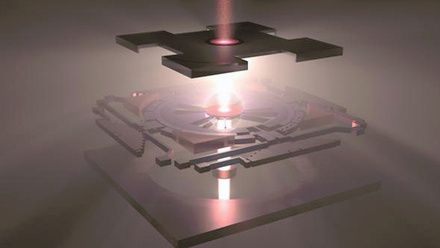3D printing ice for artificial blood vessels
A new 3D printing method uses ice to build a template for artificial blood vessels in engineered tissue.

Researchers at Carnegie Mellon University, USA, hope the vessels can eventually be used in artificial organ transplants or drug testing. They have also introduced endothelial cells into the fabricated vessels.
3D ice printing generally involves adding a stream of water to a very cold surface. 'What makes our method different…is that instead of letting the water completely freeze while we are printing, we let it maintain a liquid phase on top. This continuous process, which is what we call ‘freeform’, helps us to get a very smooth structure. We don’t have a layering effect typical with many 3D printing [techniques],' explains Feimo Yang, a graduate student at the University.
They have used heavy water – a form of water where the hydrogen atoms are replaced by deuterium – to give the water a higher freezing point and help create the smooth structure.
The cells survive on the gelatin they were embedded in for up to two weeks. In the future, they intend to culture those cells for a longer duration.







